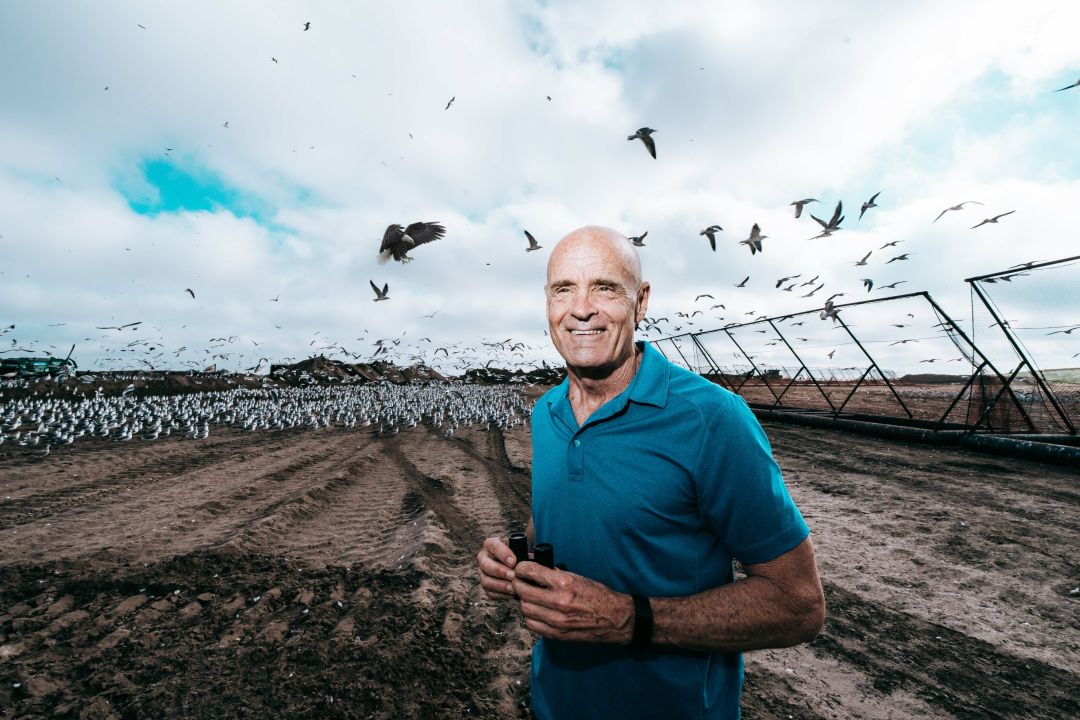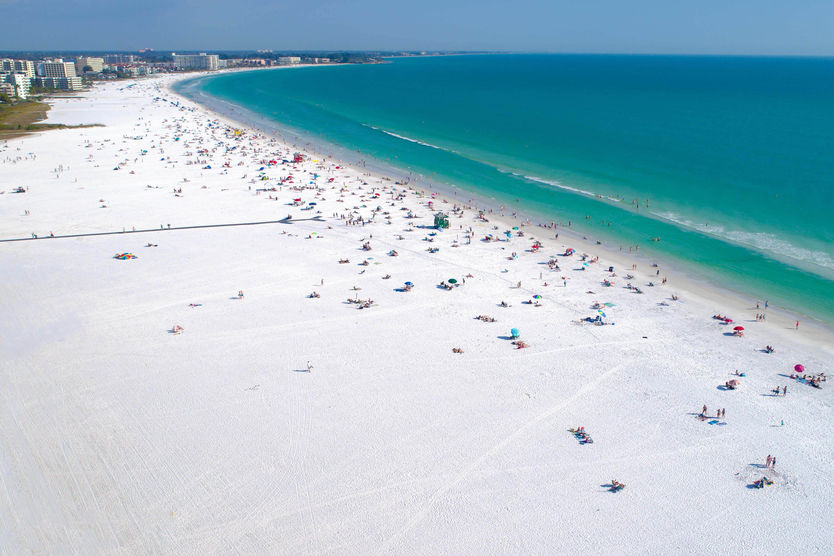The Dump Is Probably the Best Place to Spot the Once-Endangered Bald Eagle (Yes, Really)

Author Jack Davis eagle-gazing at the Manatee landfill.
Image: Everett Dennison
I recently met Pulitzer Prize-winning author Jack Davis at the dump. He has just published a book called The Bald Eagle: The Improbable Journey of America’s Bird. It’s a redemption story that tells the history of our nation’s conflicting relationship with its symbolic bird. So, to find some eagles, we went to the one place where we were guaranteed success—the Manatee County landfill.
In flat Florida, the Lena Road Landfill is one of the highest landmarks in the area, where nearly 350,000 tons of trash are piled skyward each year. It’s also home to one of the largest and most consistent concentrations of bald eagles in Florida, a state with one of the largest populations of bald eagles in the nation.
When Davis and I met, the morning fog had just lifted. The bald eagles were among thousands of other birds—paranoid-looking ibises, lurking turkey vultures, gangly wood storks and oceans of hungry seagulls. I counted more than 20 eagles, but I might have undercounted. At a distance, it was difficult to distinguish a bald eagle from a vulture, because most of the eagles at the dump were juveniles. Bald eagles don’t develop their distinct white heads until they’re five years old.
It felt wrong to see eagles in the trash. In my mind, the bald eagle is a revered and stately bird soaring over purple mountains and amber waves of grain, not scavenging through dirty diapers and rotting orange peels. Davis understands the sentiment. “Many people believe it’s beneath the bald eagle’s dignity to be at the local dump,” he told me. “They believe that must mean there’s not enough food out there, and this is what they have to resort to.”
But Davis explained that dumpster diving is highly intelligent behavior. “Scavenging is a smart way to get calories,” he says. “They’re going where food is easiest. All wildlife does that, and the dump is a giant bird feeder.”
In his book, Davis details how there have been two kinds of bald eagles throughout American history: the symbol and the living bird.
According to Davis, the bald eagle was the obvious choice as an all-American emblem—an indigenous bird free from European influences. “We always embraced the symbol,” Davis says. “We put it on the medal of honor, on all our sports teams’ uniforms, on our most famous motorcycle.”
But then there’s the way we actually treated the bird. Even though the eagle was an emblem for our burgeoning nationality, for much of the 18th and 19th centuries, ornithologists shot the bird out of the sky in order to study it, families killed them because of a rumor that they were baby snatchers, and farmers did the same because of a rumor that they snatched livestock with their large talons.
How is it, Davis asks, that we could hold this bird in such high esteem and be so violent toward it as a wild animal?
In his previous book, the Pulitzer-winning The Gulf: The Making of an American Sea, Davis told us about the Gulf of Mexico’s beauty and bounty and yet how hell-bent we’ve been to destroy our water and coastal land. Davis’s new book is much more optimistic.
“I wanted to write a more positive story,” Davis says. “The bald eagle epitomizes a success story. We are beat over the head with grim environmental stories. We are emotionally saturated with all this doom, and we can only take so much. I wanted to offer an alternative.”
He tells the story of how we twice redeemed ourselves. The first time, after centuries of gratuitous violence toward the bird, we finally recognized that we were in an unsustainable relationship with our national symbol and passed the Bald Eagle Protection Act in 1940.
Our second good act came in the 1970s. Thanks to good government officials, diligent scientists and citizens concerned that we were fouling our own nest, we made a major shift in environmental sensibility and banned DDT.
But we still have a way to go. Davis details a couple of moments in our recent history where local officials were poor stewards of the bald eagle. In 2013, developers of the 522-acre residential project Long Bar Pointe cut down a legally protected tree that housed a bald eagle nest.
As Davis wrote, “A horrified boater reported seeing a bright-red helicopter drop down over the property and use its rotor blades to blow apart an eyrie stick by stick.” The eagles kept returning to the area and rebuilding their nest until 2018, when the developers were granted permission by the Trump-pressured U.S. Fish and Wildlife Commission to cut down the tree and keep the birds away for good.
Sarasota County officials also destroyed the home of a nesting pair of eagles that built their eyrie on the “skeletal lighting structure above the right field” at Ed Smith Stadium. In 2010, the county applied for a permit to take down the nest, arguing that the lights endangered the eagle. Davis points out that ospreys, whose nests are nearly identical to bald eagles, frequently build their nests on lighting structures all over the state without incident. The county was granted permission and the birds were “forced to forfeit their two eggs.”
The birds came back two more times. Each time they rebuilt their nest, and each time the county applied for permits to remove them, until finally, “the eagles circled the field from above, watching everything they had built being destroyed and thrown in a dumpster, and then they left for good.”
At the dump, Davis got close to a juvenile bald eagle perched on a plastic methane tube poking out of a grassy hill hiding the trash decomposing underneath. He doesn’t get upset when he sees bald eagles at the dump. In fact, he says their presence is a good thing. All these juvenile bald eagles signal that there is a new generation. They’re reproducing.
“There was once a time when scientists thought bald eagles wouldn’t tolerate us,” Davis says. “But they do. They are perfectly willing to live with us.”



